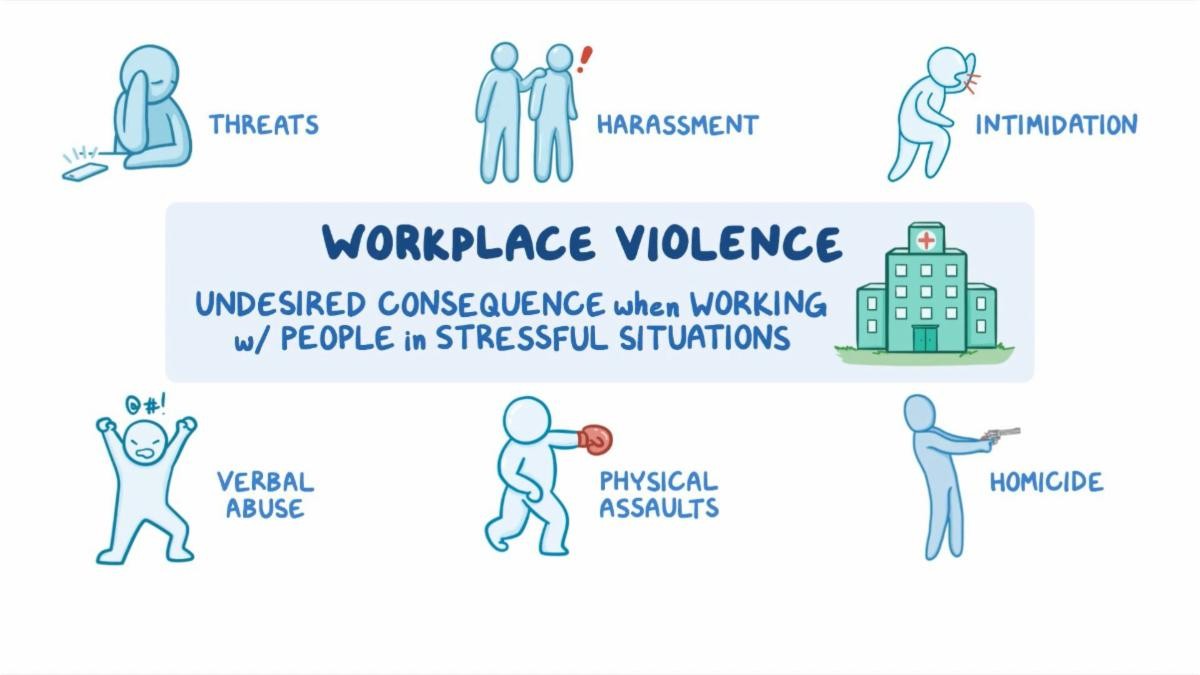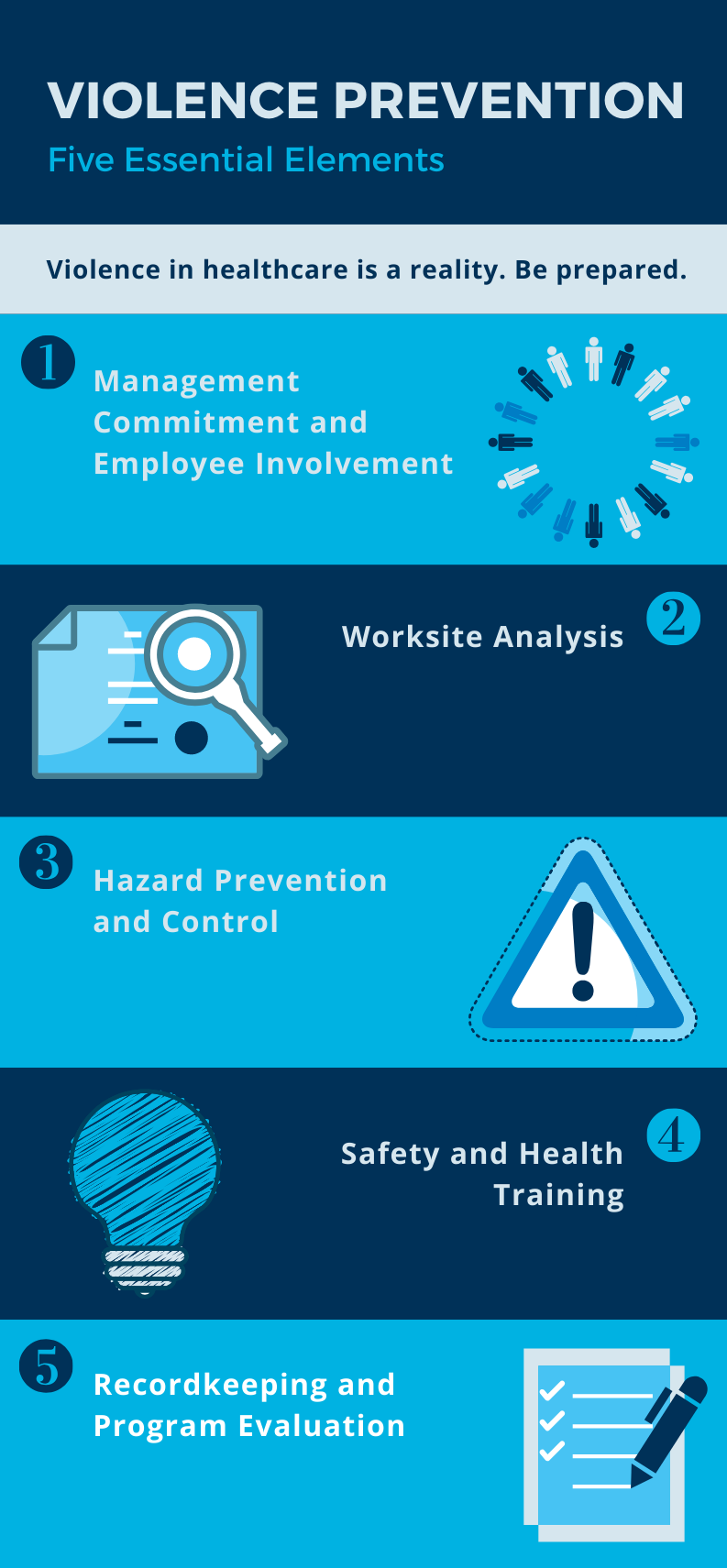The Role of Worker Training and Recognition in Enhancing Work Environment Physical Violence Prevention Initiatives Throughout Different Industries
The combination of staff member training and awareness right into office violence avoidance campaigns is progressively acknowledged as an essential facet of organizational safety and security across diverse sectors. By executing targeted training programs, businesses can efficiently encourage their workforce to identify and attend to possible threats before they intensify. Nonetheless, the effectiveness of these efforts usually depends upon a number of important variables that vary by market, elevating important inquiries about the adaptability of training methods and their real-world effect. Comprehending these subtleties might expose methods that can dramatically boost safety and security methods and worker self-confidence in high-risk atmospheres.
Significance of Training Programs
In today's dynamic work environment, the value of training programs can not be overemphasized, particularly in the context of office physical violence prevention. These programs function as a foundational element in growing a risk-free and secure workplace society. By outfitting workers with the knowledge and abilities needed to identify, alleviate, and reply to possible dangers, organizations can cultivate an environment that focuses on security and health.
Efficient training programs do even more than simply instruct; they empower workers to recognize caution indicators of violence, recognize the protocols for reporting cases, and establish approaches to de-escalate potential disputes. Furthermore, they impart a feeling of collective responsibility among staff, motivating positive participation in preserving a secure office.
Investment in training not just boosts employee understanding yet also demonstrates an organization's dedication to guarding its workforce. This positive strategy can lead to decreased occurrences of office physical violence, reduced absenteeism, and improved employee morale. Ultimately, extensive training programs are important to establishing a resilient organizational society that values safety and promotes a healthy and balanced workplace, consequently decreasing the risk of physical violence and its connected effects.
Trick Components of Effective Recognition
A thorough awareness program includes a number of vital parts that are crucial for efficiently preventing work environment physical violence. Clear interaction of procedures and policies connected to work environment physical violence is essential. Employees need to be informed about the organization's stance on physical violence and the specific methods in place for reporting cases.
Second, training sessions need to include practical situations that employees might come across. This practical strategy helps staff members recognize cautioning signs of prospective physical violence and furnishes them with the essential skills to de-escalate stressful scenarios. Third, fostering a supportive work environment society is important; staff members ought to really feel encouraged to speak out without fear of retaliation.
Integrating comments systems enables workers to share their insights and experiences, which can lead to continuous improvement of awareness initiatives. By incorporating these elements, organizations can develop a robust structure for protecting against office physical violence, eventually contributing to a safer and more productive setting for all staff members (california workplace violence prevention).
Industry-Specific Training Techniques
Efficient work environment violence prevention training have to be customized to the distinct challenges and threats encountered by certain markets. For instance, healthcare settings need training that deals with the high likelihood of experiences with aggressive patients or site visitors. Programs ought to concentrate on de-escalation methods, recognizing indication of potential that site physical violence, and guaranteeing staff recognize the significance of reporting cases.
On the other hand, retail setups may encounter different threats, such as burglary or consumer conflicts. Training in these settings must highlight situational recognition, reaction methods during emergencies, and the importance of protecting cash money and belongings.
Production and construction markets offer their own dangers, frequently connected with interpersonal disputes or harmful working conditions. Training in these markets need to include methods for problem resolution, promoting a culture of safety and security, and urging open communication among staff members.
Moreover, corporate offices might require training fixated stopping harassment and intimidation, fostering a respectful work environment society, and applying clear reporting systems. Each market has to not just recognize its certain susceptabilities yet additionally adapt training materials to resonate with the workforce successfully, making certain that employees feel equipped and empowered to manage prospective violent situations.
Determining Educating Efficiency
Evaluating the influence of office physical violence prevention training is important for guaranteeing that staff members are appropriately prepared to manage potential threats. Pre- and post-training surveys can gauge adjustments in worker knowledge, mindsets, and behaviors worrying workplace physical violence.
In addition, functional assessments, such as role-playing circumstances or simulations, can offer understandings look at this site into just how well employees use discovered skills in real-life scenarios. Keeping an eye on event records before and after training can likewise work as a sign of performance, as a reduction in events might reflect enhanced staff member preparedness.
Moreover, feedback from participants must be systematically gathered to determine locations for improvement in training material and distribution. Conducting follow-up examinations at regular intervals aids receive awareness and reinforces training concepts in time - california workplace violence prevention. By using an extensive approach to determining training performance, companies can guarantee that their workplace physical violence avoidance efforts cultivate a safer atmosphere and improve total staff member health
Building a Culture of Security

Training plays a critical function in this cultural change. Normal, comprehensive training sessions inform workers regarding identifying caution indicators of office physical violence and the proper feedbacks. Motivating open communication allows employees to voice concerns without fear of retribution, advertising cumulative responsibility for security.
Furthermore, integrating safety into day-to-day procedures makes sure that it ends up being a shared value as opposed to a plain conformity problem. This includes regular safety and security drills, updates on plans, and comments systems that involve employees in safety and security conversations and enhancements.
Ultimately, a robust society of safety not just minimizes the dangers of workplace physical violence yet likewise boosts staff member morale and productivity. By cultivating an atmosphere where safety is a basic priority, companies can produce resilient work environments that sustain both private well-being and cumulative success.
Conclusion
In verdict, worker training and awareness are essential components in the avoidance of work environment physical violence throughout different markets. Effective training programs, tailored to details industry demands, boost workers' ability to acknowledge and react to potential dangers. By executing comprehensive understanding strategies and promoting a society of safety, companies can substantially reduce events of office violence and enhance total employee morale. Dedication to ongoing training and examination ensures sustained performance and adaptability in attending to arising challenges within the workplace atmosphere.

Regular, comprehensive training sessions educate employees about recognizing warning signs of work environment physical violence and the proper reactions.In conclusion, employee training and understanding are crucial elements in the prevention of workplace physical violence throughout different markets.